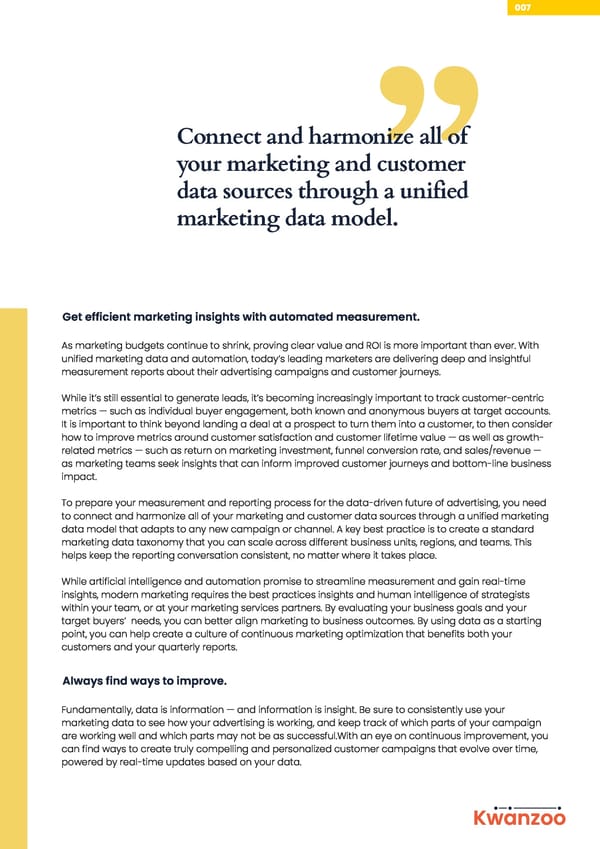007 CCoonnnneecctt aanndd hhaarrmmoonniizzee aallll ooff yyoouurr mmaarrkkeettiinngg aanndd ccuussttoommeerr ddaattaa ssoouurrcceess tthhrroouugghh aa uunniiffiieedd mmaarrkkeettiinngg ddaattaa mmooddeell.. ” Get efficient marketing insights with automated measurement. As marketing budgets continue to shrink, proving clear value and ROI is more important than ever. With unified marketing data and automation, today’s leading marketers are delivering deep and insightful measurement reports about their advertising campaigns and customer journeys. While it’s still essential to generate leads, it’s becoming increasingly important to track customer-centric metrics — such as individual buyer engagement, both known and anonymous buyers at target accounts. It is important to think beyond landing a deal at a prospect to turn them into a customer, to then consider how to improve metrics around customer satisfaction and customer lifetime value — as well as growth- related metrics — such as return on marketing investment, funnel conversion rate, and sales/revenue — as marketing teams seek insights that can inform improved customer journeys and bottom-line business impact. To prepare your measurement and reporting process for the data-driven future of advertising, you need to connect and harmonize all of your marketing and customer data sources through a unified marketing data model that adapts to any new campaign or channel. A key best practice is to create a standard marketing data taxonomy that you can scale across different business units, regions, and teams. This helps keep the reporting conversation consistent, no matter where it takes place. While artificial intelligence and automation promise to streamline measurement and gain real-time insights, modern marketing requires the best practices insights and human intelligence of strategists within your team, or at your marketing services partners. By evaluating your business goals and your target buyers’ needs, you can better align marketing to business outcomes. By using data as a starting point, you can help create a culture of continuous marketing optimization that benefits both your customers and your quarterly reports. Always find ways to improve. Fundamentally, data is information — and information is insight. Be sure to consistently use your marketing data to see how your advertising is working, and keep track of which parts of your campaign are working well and which parts may not be as successful.With an eye on continuous improvement, you can find ways to create truly compelling and personalized customer campaigns that evolve over time, powered by real-time updates based on your data. Kwanzoo
 4. Data Driven Advertising Page 7 Page 9
4. Data Driven Advertising Page 7 Page 9